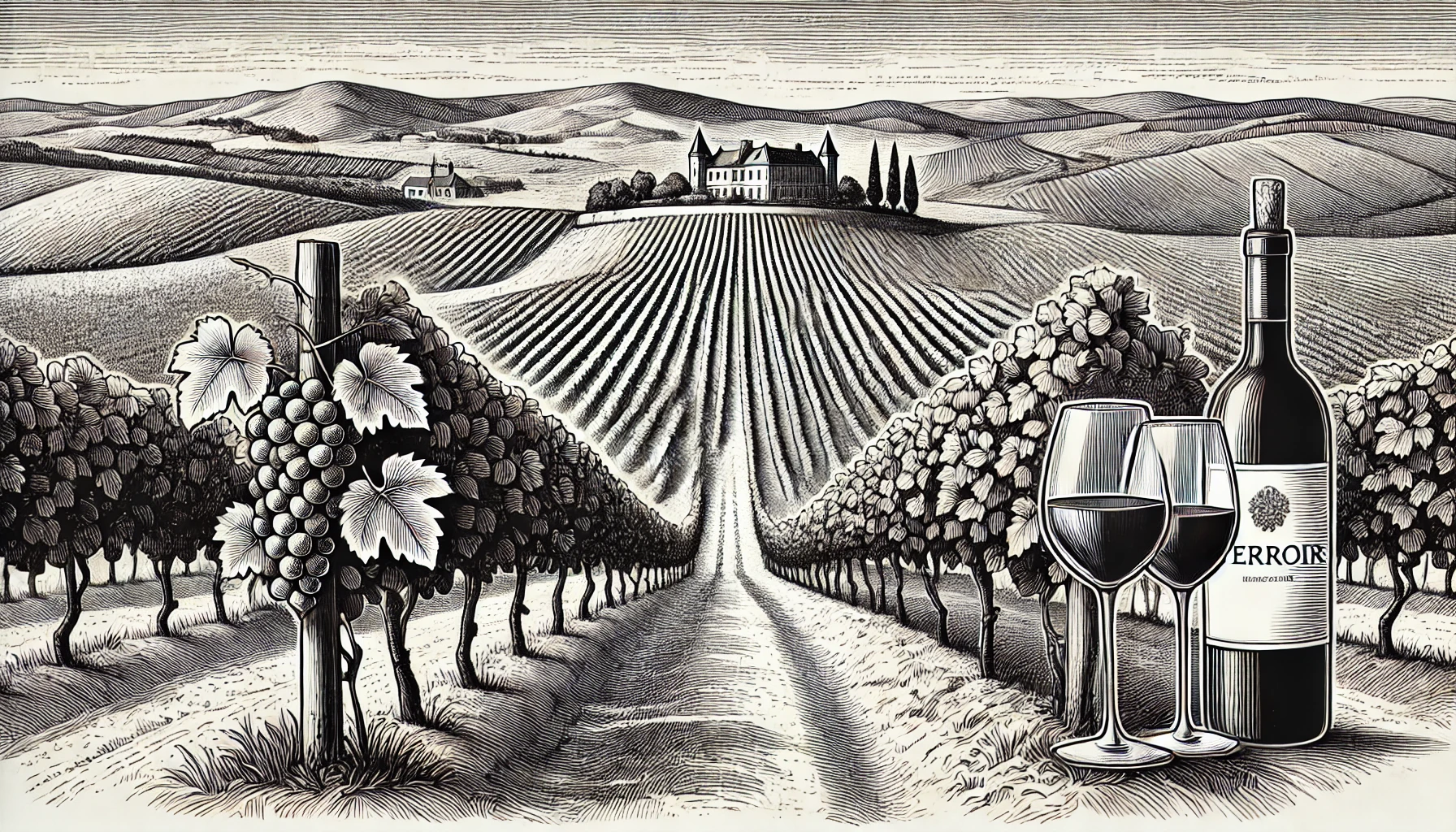
Terroir is a French term that refers to the unique set of environmental factors that influence the characteristics of a wine. It’s often considered the “soul” of a wine, as it reflects the climate, soil, geography, and even the human hand involved in the growing of grapes and winemaking.
At the core of terroir is the idea that the same grape variety, grown in different regions, will produce wines that taste different. This happens because factors such as soil composition, temperature, altitude, and rainfall vary from place to place, and these variables affect the growth of the grapevines and the development of the fruit.
For example, grapes grown in a cooler climate may retain more acidity, while those from a warmer climate might develop higher sugar content, leading to fuller-bodied wines. Soil composition also plays a significant role—grapes grown in rocky, well-drained soils might produce more complex and mineral-driven wines, while clay-rich soils can lead to wines with more structure and tannins.
Terroir goes beyond the natural elements; human intervention also plays a role. Vineyard management techniques, harvest times, and winemaking traditions contribute to the expression of terroir. In regions like Burgundy, France, the concept of terroir is sacred, with vineyards often classified based on their terroir.
Ultimately, terroir gives each wine a sense of place, distinguishing it from others and providing wine lovers with a deeper connection to the origins of their wine. Understanding terroir is key to appreciating the nuances and diversity of wines from around the world.
Curious about more wine terms and insights? Visit our Wine Wiki section and explore the basic wine terms for expert definitions and tips!
[…] is synonymous with world-class Chardonnay, and with good reason. The region’s terroir, with its limestone-rich soils and gentle slopes, offers the ideal conditions for producing […]